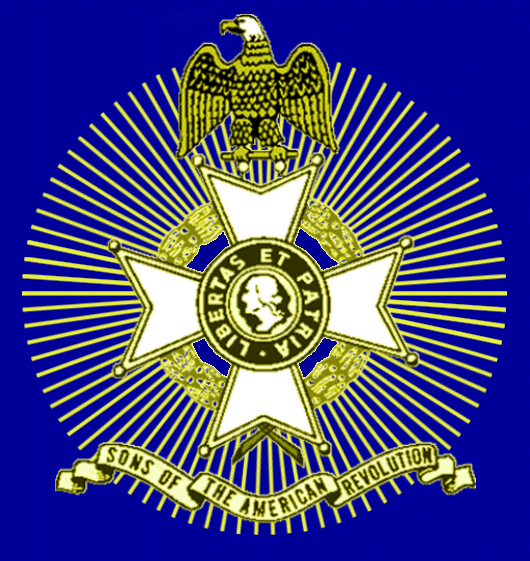The Life and Times of Elizabeth Chapman Hunter*
By John D. Sinks, Fairfax Resolves Chapter, Sons of the American Revolution
29 October 1994
Elizabeth Chapman Hunter was into the Virginia and Maryland Gentry about the year 1733. Her father, Nathaniel Chapman, had financial interests on both sides of the Potomac River. He was one of the executors of Lawrance Washington. In this area. he owned the plantation, “Summer Hill,” which included the land of the Metro Garage on Jefferson Davis Highway at Glebe Road. Her mother was Constantia Pearson. Elizabeth grew to be a tall lady. She had narrow shoulders and was slightly knock-kneed. Elizabeth married a physician who had immigrated from Scotland, Dr. John Hunter. Hunter was a large man, who wore a reddish brown wig. He died in 1763, leaving Elizabeth with three children and pregnant with a fourth:
George Hunter c. 1754, an officer of the Virginia State Navy during the Revolution.
Amelia Hunter c. 1756, wife of Capt. William Henry Terrett, Jr.
John Chapman Hunter 1762
Nathaniel Chapman Hunter c. 1764, said to have served in the American army at age 16.
Elizabeth did not remarry.
Unlike most women, Elizabeth had documented service for the patriot cause. The Fairfax County Court Booklet for the February Term of 1782 records adjusted claims for property impressed or taken into public service. On page 2 of that booklet Elizabeth Hunter is credited with having supplied a driver and horses for 40 days. Had her husband still been living, or had she remarried, the record would have been in her husband’s name and we would not be honoring a lady. Unfortunately, the booklet does not record the dates the driver and horses were in use and the certificate has not survived in the records of the state archives. There is a strong possibility that the horses and driver served for transport when the army moved from New York to Yorktown. The Yorktown Campaign was undertaken shortly after Thomas Nelson became governor in June of 1781 and the public was called upon to support the army to a much greater extent than before. We have no way of telling whether Elizabeth volunteered her horses and driver or whether they were impressed. Whichever, this kind of service was critical to winning the Revolution, for without supplies, our army would have dissolved long before 1781, and the Siege of Yorktown could never have been sustained.
The NSSAR, NSDAR, and N.S.C.A.R. classifies this as “Patriotic Service,” distinguishing it from military service and civil service. It is sometimes argued that because such service was not always “voluntary,” it should not be counted as patriotic service. Military service, however, was often not voluntary either, as many men were drafted. Ultimately, the question of whether any service was voluntary or involuntary depends upon what was in people’s heads. That is difficult enough to determine for the living. To determine it for people who have been dead for 150 to 225 years, it is virtually impossible. The basic fact remains, this was documented service that conformed to the laws passed by the Revolutionary government. Who are we to second guess such service over two centuries later?
Elizabeth Hunter died in 1783, the year the Treaty of Paris ending the Revolution was signed. She was buried at the family plantation “Summer Hill.” . A tortoise shell comb held her gray hair. Next to her was her husband, John Hunter. Her paternal grandfather was buried there also, and her mother would be interred there when she died five years later. On March 28, 1940 the graves at Summer Hill were removed and reinterred at this site on April 6. At the time of removal, a description of the remains was compiled, providing us with a rare physical description. Unlike our previous subjects, we know more about what Elizabeth looked like than we know about what she thought and believed.
*This paper was presented on October 29, 1994 at the dedication of an SAR Revolutionary Grave Marker by the Fairfax Resolves Chapter at the Chapman-Hunter monument at Pohick Episcopal Church, Fairfax County, Virginia.

